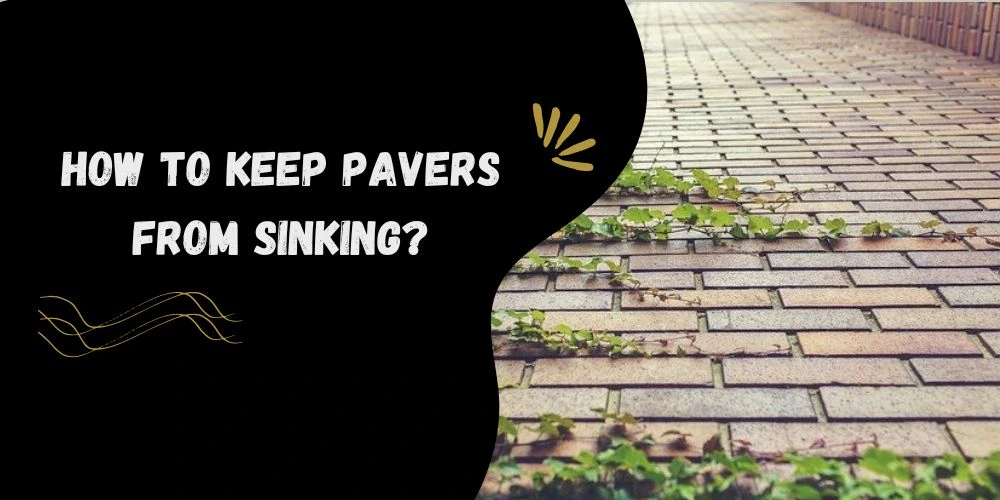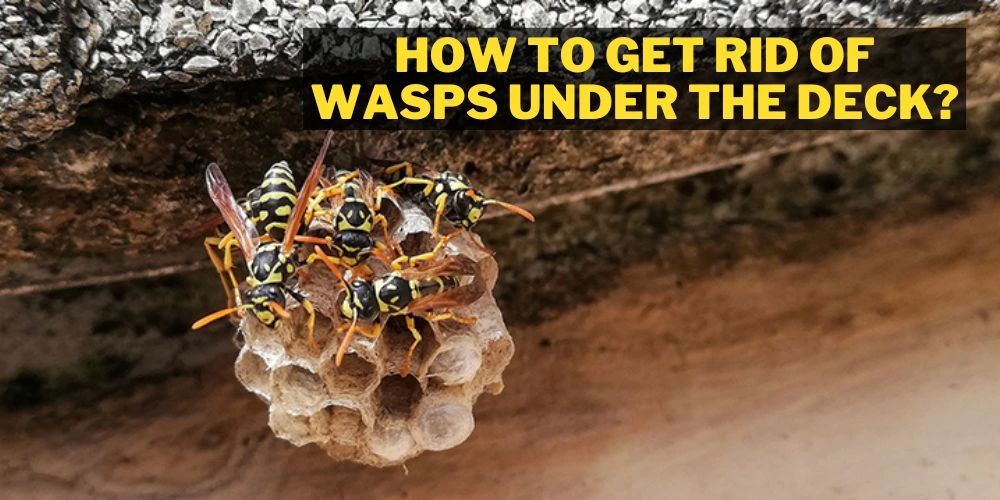Removing dead and decaying grass allows air and nutrients to penetrate deeper into the soil, ultimately lead to a healthier lawn. But when it’s raining out, or conditions are otherwise wet – can you dethatch a wet lawn?
This article will explore the different aspects of dethatching when the lawn is wet, from risks to recommended methods. We’ll also cover how to identify signs of thatch accumulation to decide if dethatching needs to be done and how often.
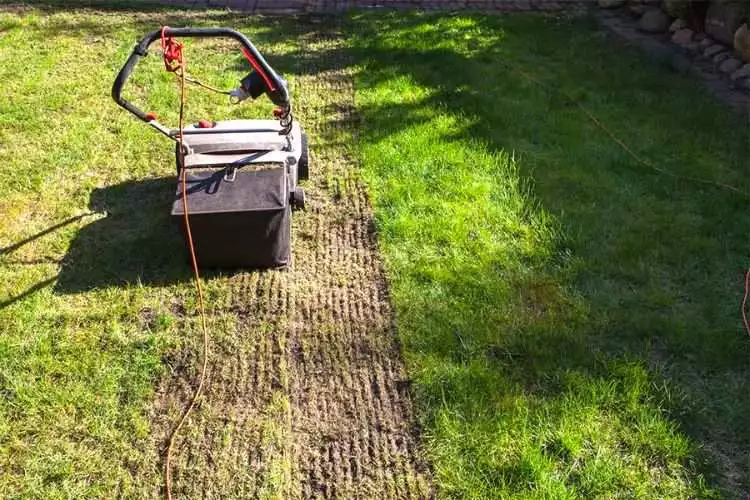
Can you dethatch a wet lawn?
No it is not recommended to dethatch, when the lawn is wet. There are some risks are involved with doing so. When dethatching in wet conditions, you risk damaging your turf if the soil or grass blades are too saturated or fragile.
Additionally, muddy conditions can make it difficult for you to see any debris lying around on the turf surface, which could lead to accidental damage to your machinery. Therefore, it is recommended that you wait until the ground has completely dried out before proceeding with dethatching.
Once all traces of moisture have disappeared from the grass blades and soil surface, you can safely get started. If dethatching requires more than one day, to avoid damaging your soil structure by overworking them when they’re wet, it’s advised that you wait until all signs of excess moisture are absent before proceeding.
How to determine if a lawn is too wet?
If you’re trying to decide whether your lawn is too wet to dethatch, there are several ways to check. Here are some steps you can take to make sure that the soil and grass blades are dry enough when dethatching:
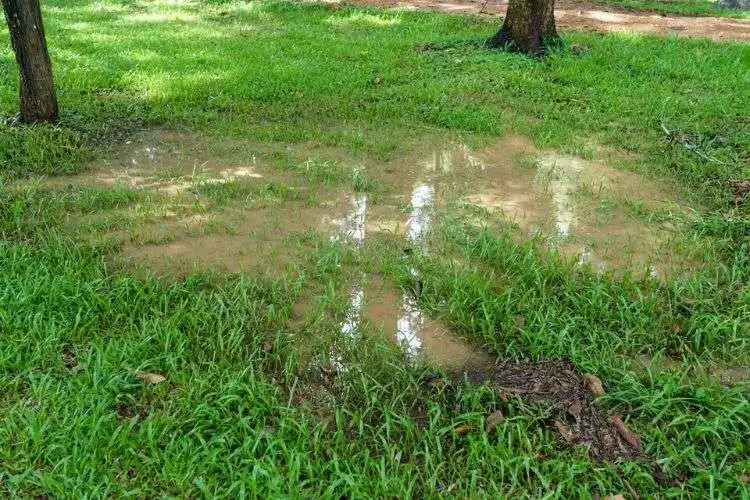
- Feel the ground: With bare feet or gloves on, walk across the area you plan to dethatch and pay attention to how the surface feels. It may be too soon for dethatching if it’s still significantly soft.
- Check for standing water: Use a shovel or trowel to scoop out a handful of turf from different areas of your lawn, and check for standing water or mud in the holes you have dug up. If any standing water is present, wait until it has fully drained before continuing with your work.
- Check drainage: Pour a cup of water over some areas you plan on dethatching and pay attention to how quickly it drains away. This will help you gauge how well land can absorb moisture and if fast draining times indicate that conditions may be right for dethatching soon afterward.
- Look at grass blades: Examine individual grass blades and see if they appear limp or pliable; if they do, it could mean they are still too wet for safe dethatching operations. They should be crisp looking to withstand the machinery without being damaged by wet conditions during use.
- Once all signs of excess moisture have gone from both the soil surface and grass blades, then it is safe to proceed with dethatching operations.
Risks of dethatching a wet lawn
Dethatching is an important part of lawn maintenance and care, but it can be hazardous in wet conditions. Here are some risks associated with dethatching wet lawns that need to be kept in mind:
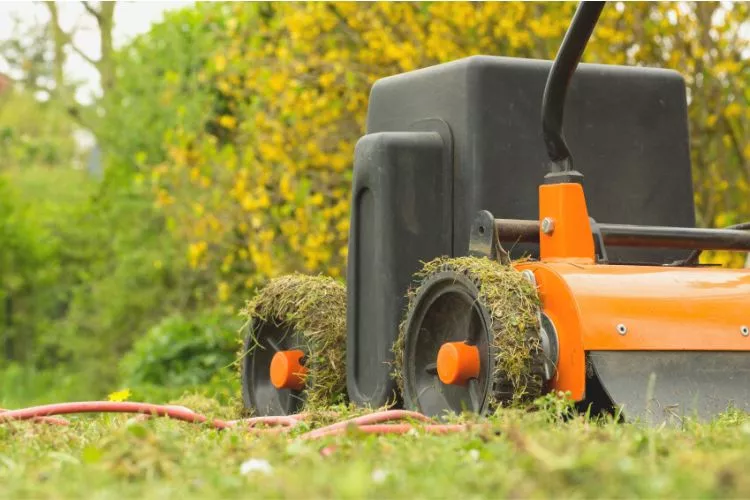
1. Damage to Turf
When dethatching in wet conditions, you risk damaging your turf if the soil or grass blades are too saturated or fragile. This can lead to thinning of existing turf due to heavy machinery being used, resulting in bare patches and weak, damaged grass. In extreme cases, it could even cause death in certain areas of your lawn.
2. Unseen Debris on Lawn Surface
Muddy conditions make it difficult for you to see any debris lying around on the turf surface, which could lead to accidental damage to your machinery. Not only can this damage the equipment itself, but unseen debris can also damage delicate root systems of plants or cause compaction issues in soils which may not get properly resolved until many months after dethatching.
Overworking Soils
To avoid damaging the structure of your soil by over-working them when they’re wet, it’s advised that you wait until all signs of excess moisture are absent before proceeding with dethatching operations.
This is because working with the land in wet conditions can reduce the porosity and infiltration rate of soils, affecting their ability to absorb nutrients and retain air pockets needed for healthy plant growth. It can also result in increased erosion hazards due to the lack of structural stability within the soil layers themselves.
When should you not dethatch a lawn?
Dethatching is a great way to keep your lawn healthy and lush. However, there are certain situations where it may not be recommended or safe to do so. Here are some of the cases in which dethatching is not advised:
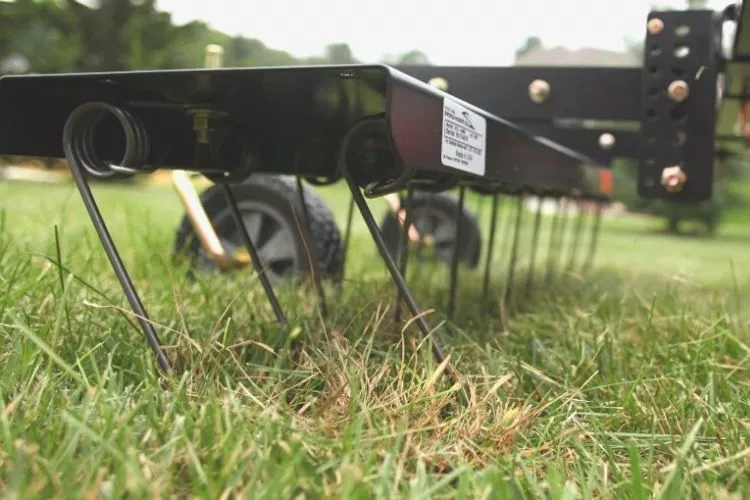
Recent Heavy Rainfall
If your area has experienced a lot of heavy rainfall recently, then it’s likely that the soil or grass blades are too wet for dethatching operations to be carried out safely. In such cases waiting until all signs of excess moisture have gone from the turf before proceeding with dethatching is advised.
Muddy Surface Conditions
Muddy conditions can make it difficult for you to see any debris lying around on the turf surface, which could lead to accidental damage to your machinery. Not only can this damage the equipment itself, but unseen debris can also damage delicate root systems of plants or cause compaction issues in soils which may not get properly resolved until many months after dethatching.
Soft Ground
Soft ground caused by too much moisture may make it difficult for you to safely maneuver heavy machinery across the area without damaging existing grass blades or compressing soils beyond a point where they don’t come back together correctly afterward. Always ensure the ground is firm and dry enough before dethatching operations begin.
Frequently Asked Questions (FAQs)
Is it better to dethatch a lawn when it is wet or dry?
Dethatching a lawn when it is dry is generally recommended, as wet conditions can make it difficult to effectively and safely maneuver the machinery without damaging existing grass. Additionally, when the soil or grass blades are too wet, you risk damaging your turf due to heavy machinery being used, resulting in bare patches and weak, damaged grass.
What is an alternative to dethatching?
Core aeration is an alternative to dethatching and can be a great way to give your lawn the same benefits of dethatching without needing to use heavy machinery. Core aeration involves using a machine to remove plugs or cores of soil from the turf surface. This helps alleviate compaction issues and can help grassroots access much needed air and nutrients. It also allows water, fertilizers, and other products to penetrate deeper into the soil.
Should I dethatch my lawn before or after rain?
Dethatching your lawn before rain is generally recommended, as wet conditions can make it difficult to effectively and safely maneuver the machinery without damaging existing grass. Additionally, if the soil or grass blades are too wet, you risk damaging your turf due to heavy machinery being used, resulting in bare patches and weak, damaged grass. If you have an excessively matted and thick lawn, you may consider dethatching after the rain when the soil has softened slightly, and some moisture is still present.
Conclusion:
A simple answer to the question “can you dethatch a wet lawn?” would be it is possible to dethatch a wet lawn, but there are risks involved. Wet conditions make it difficult to maneuver machinery without damaging existing grass, and overly wet soils or grass blades can be damaged due to heavy equipment.
For best results, dethatching should be conducted early in the day before rain when the soil is somewhat moist but still workable. Alternatively, core aeration can provide many of the same benefits with less risk of damage caused by heavy machinery.

